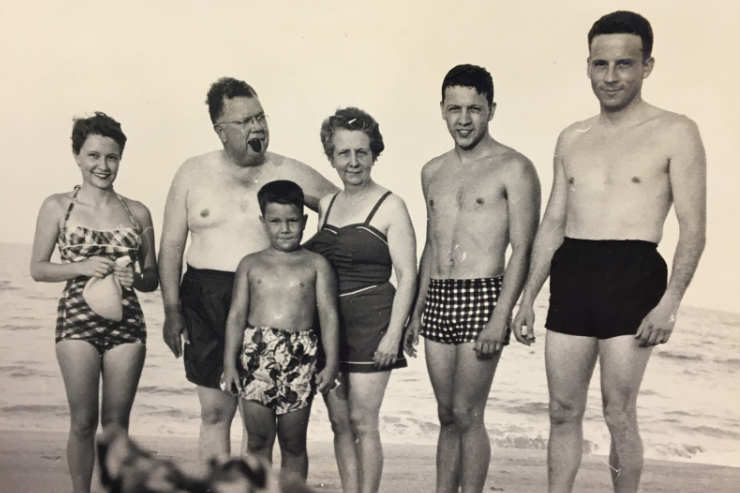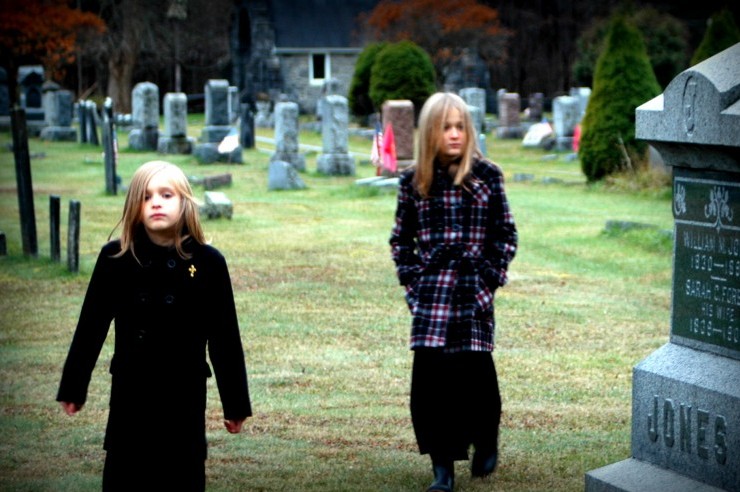
The Browns: Anna, Harry Sr., Tom, Mary Margaret, Dick, Harry Jr.
It is the end of an era for the Brown Family of 1234 Cherry Street.
They represent the middle. The middle of the country. The middle of the century. The middle class. The generic American family. The common man. A common name. The family from the Dick and Jane books. Every Tom, Dick and Harry.
But the family of which I speak, the Brown Family of 1234 Cherry Street, is a real-life family. They are my family. They lived in Springfield, Missouri. They are the family my own dad grew up in. A happy American family. And they were not just any Tom, Dick and Harry, they were my Tom, Dick and Harry.
Actually they were Tom Brown, Dick Brown, Anna Brown and Harry Brown! It’s a great story: Harry was the eldest, named after his father. Then came Anna and Dick (named after family members). When another child was expected, unexpectedly, a few years later, it was obvious that, whether it was a girl or boy, that baby was going to have to be named Tom! And he was.
Sadness and nostalgia surround these happy memories now as Tom is the last of this Brown family still living. The eldest of these “kids,” Harry, passed away only a few weeks ago on Easter day. My dad (Dick) passed away less than a year ago and their sister, Anna, died in 2014. I can’t help thinking about how lonely this must be for Uncle Tom. But, it is a loss for us all.
They became a family in 1930, when life was in black and white. At least that’s what all the pictures show. Everything seems a lot simpler in black and white and it fit this family very well. They represent a time of wholesome innocence and optimism in mid-America.
When this photograph was taken in 1953, America had pulled together through the “War to End All Wars” and thought well of itself. Elvis Presley’s voice would hit the radio waves a year later. The Browns were vacationing in Florida, a trip made by car before interstates made it simple. Harry was on leave from the Navy.
In my dad’s whole life, I never heard him speak with anything but fondness about his family. He often mentioned that he had never once heard his parents argue. They were happy people. These are the faces of Americans who made America what it is today—not by themselves, of course.
The character of a place and time is not merely a thing that has been drawn out of it by the occupants, but a thing that has also been put there by those who have resided there. Not only does our time make us who we are, but we make it what it is. This dynamism makes up a family and a family line. Each member who comes along into the family, carves the family resemblance into its future progeny.
It is a strange thing that, though I was not there with them, I love, as my own, the times that they lived. We can all love the Browns as the everyman family they represent. When you read, “See Spot run!” you can tell that cynical voice in your head telling you, “Nobody was really like that family.” that, “Yes, somebody was really like that family!” If you can’t find them in your own family tree, you can borrow mine. The Browns—Tom, Dick, Anna, Harry—of 1234 Cherry Street are that family.
As Mark Twain (a Missourian himself) said, “I have come by family memories that ought to be my memories. Well, they are now.”
And maybe it isn’t so strange after all that I want to those happy memories to be mine. Twain also observed that, “As soon as a man recognizes that he has drifted into age, he gets reminiscent. He wants to talk and talk; and not about the present or the future, but about his old times. For there is where the pathos of his life lies—and the charm of it. The pathos of it is there because it was opulent with treasures that are gone, and the charm of it is in casting them up from the musty ledgers and remembering how rich and gracious they were.” (Frank Fuller and My First New York Lecture, first published in 2009 in Who Is Mark Twain?)
How rich and gracious they were!
















